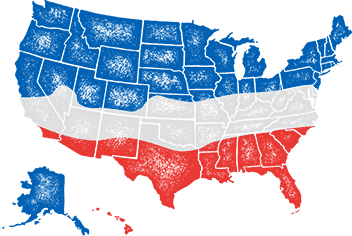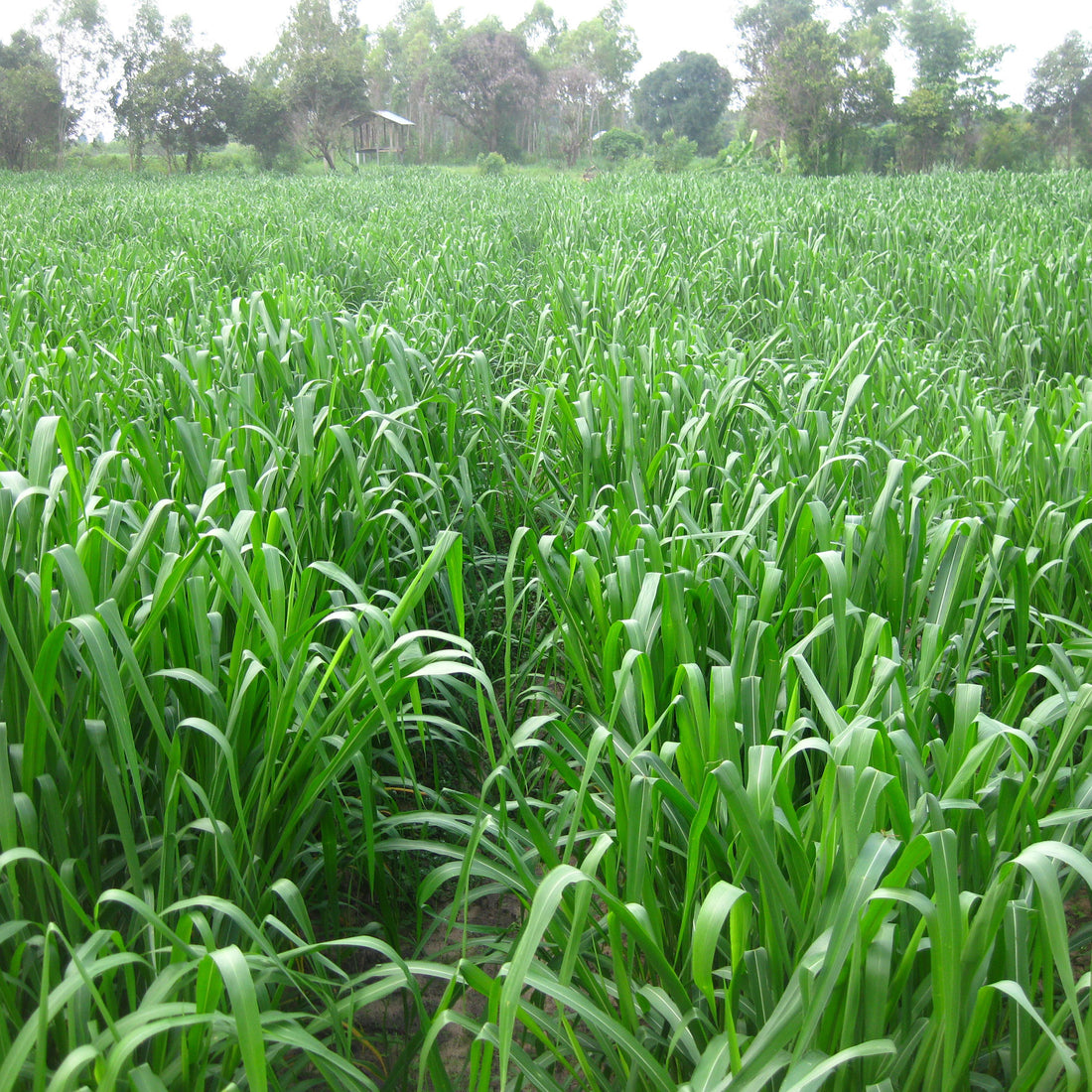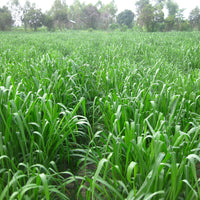
- When to plant:
- Spring, Summer
- Fertilizer:
- Varies
- Seeding rate:
- 12 - 16 lbs. per acre
- Overseeding rate:
- 12 lbs. per acre
- Seeding depth:
- 1/8 - 1/4 inch
- Ideal ph:
- 5.0 - 8.0
- Gmo:
- No
- Inoculant needed:
- No
- Coated or raw:
- Coated
- Lifecycle:
- Perennial
- Climate zones:
- Cool Season, Transition Zone, Warm Season
Mombasa guinea grass is a tall grass, similar to hybrid Napier grass in habit, but far more leafy and is very suitable for cut-and-carry or grazing by all live stock. Mombasa is known for being an incredibly productive leafy grass producing very impressive levels (30% - 45% more than other varieties) of dry matter per year on extremely poor soils. This variety can be rotationally grazed or used primarily for hay and silage production. Cuttings can be expected every 40-45 days in the wet season and every 60-70 days in the cool season.
Mombasa guinea grass does not tolerate waterlogging. Mombasa is known for average drought, humidity and shade tolerance as well as salinity tolerance. Also known for strong pest resistance, good cold tolerance as well as high crude protein levels. Crude protein levels produced on average to poor soils are 10% - 15% where levels on much better soils will be up to 14% - 18% on average.
Mombasa guinea grass is native to Tanzania, Africa and has been successfully introduced to most tropical and subtropical countries.
Product Information
- Application or Use: Cattle Forage, Livestock Grazing, Cover Crop, Erosion Control
- Germination Time: 14 - 21 days, under optimal conditions
- Growing Locations: Warm Season, Transition Zone
- Height: 2 - 3 feet
- Sunlight Requirements: 8+ hours, full sun for best results
- Advantages: Tall grass, similar to hybrid Napier grass in habit, but far more leafy and is very suitable for cut-and-carry.
- When to Plant: Recommended planting time is spring when night time temperatures are consistently 65+ degrees and 3 months prior to first frost.
Seed is treated with BASF Regent Ultra Insecticide.
*Product packaging may appear different than what is pictured.
When choosing to start a new lawn, remove old vegetation by using a de-thatcher, power rake or tiller to kill the existing vegetation. Rake or drag the area to remove debris and dead grass for a clean area. Ensure the soil is leveled and loosened to allow the seed to have good soil contact once spread on a clean seed bed.
If you have an area with heavy weed coverage, we recommend starting fresh by killing and removing the existing vegetation. If you choose to use chemicals, herbicides or fertilizers, you must check with the product's manufacturer prior to planting new seed to ensure the proper waiting period.
When overseeding an existing area, mow your lawn at the lowest setting and bag the clippingsx. Rake or drag any areas that have dead thatch or debris.

Seed Quality
Hancock Seed is dedicated to delivering the best seeds possible to our customers. Hancock Seed grows and harvests many of our products, and we acquire the majority of the rest from other family farmers.
All these seeds are processed, packaged and shipped from Hancock Farm. This helps us ensure that our high standards are met. Unlike much of the competition, we refuse to sell you a seed that was not gathered during the last harvest. You will always receive fresh product from Hancock.
Every seed we grow comes with 40 years of experience behind it...you can rest assured that all of our products are cultivated in a method that assures its potential for growth.

Your cart ( 0 )

Mombasa guinea grass is a tall grass, similar to hybrid Napier grass in habit, but far more leafy and is very suitable for cut-and-carry or grazing by all live stock. Mombasa is known for being an incredibly productive leafy grass producing very impressive levels (30% - 45% more than other varieties) of dry matter per year on extremely poor soils. This variety can be rotationally grazed or used primarily for hay and silage production. Cuttings can be expected every 40-45 days in the wet season and every 60-70 days in the cool season.
Mombasa guinea grass does not tolerate waterlogging. Mombasa is known for average drought, humidity and shade tolerance as well as salinity tolerance. Also known for strong pest resistance, good cold tolerance as well as high crude protein levels. Crude protein levels produced on average to poor soils are 10% - 15% where levels on much better soils will be up to 14% - 18% on average.
Mombasa guinea grass is native to Tanzania, Africa and has been successfully introduced to most tropical and subtropical countries.
Product Information
- Application or Use: Cattle Forage, Livestock Grazing, Cover Crop, Erosion Control
- Germination Time: 14 - 21 days, under optimal conditions
- Growing Locations: Warm Season, Transition Zone
- Height: 2 - 3 feet
- Sunlight Requirements: 8+ hours, full sun for best results
- Advantages: Tall grass, similar to hybrid Napier grass in habit, but far more leafy and is very suitable for cut-and-carry.
- When to Plant: Recommended planting time is spring when night time temperatures are consistently 65+ degrees and 3 months prior to first frost.
Seed is treated with BASF Regent Ultra Insecticide.
*Product packaging may appear different than what is pictured.
Instructions
When choosing to start a new lawn, remove old vegetation by using a de-thatcher, power rake or tiller to kill the existing vegetation. Rake or drag the area to remove debris and dead grass for a clean area. Ensure the soil is leveled and loosened to allow the seed to have good soil contact once spread on a clean seed bed.
If you have an area with heavy weed coverage, we recommend starting fresh by killing and removing the existing vegetation. If you choose to use chemicals, herbicides or fertilizers, you must check with the product's manufacturer prior to planting new seed to ensure the proper waiting period.
When overseeding an existing area, mow your lawn at the lowest setting and bag the clippingsx. Rake or drag any areas that have dead thatch or debris.
















